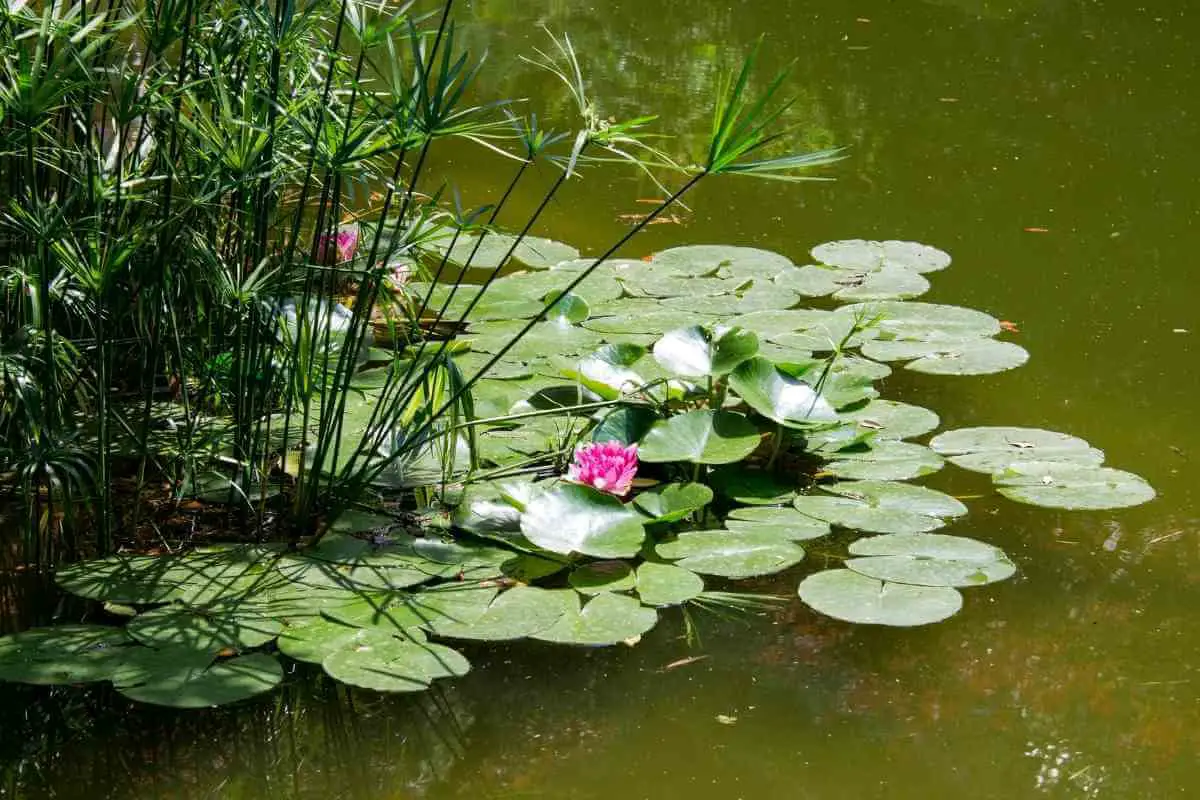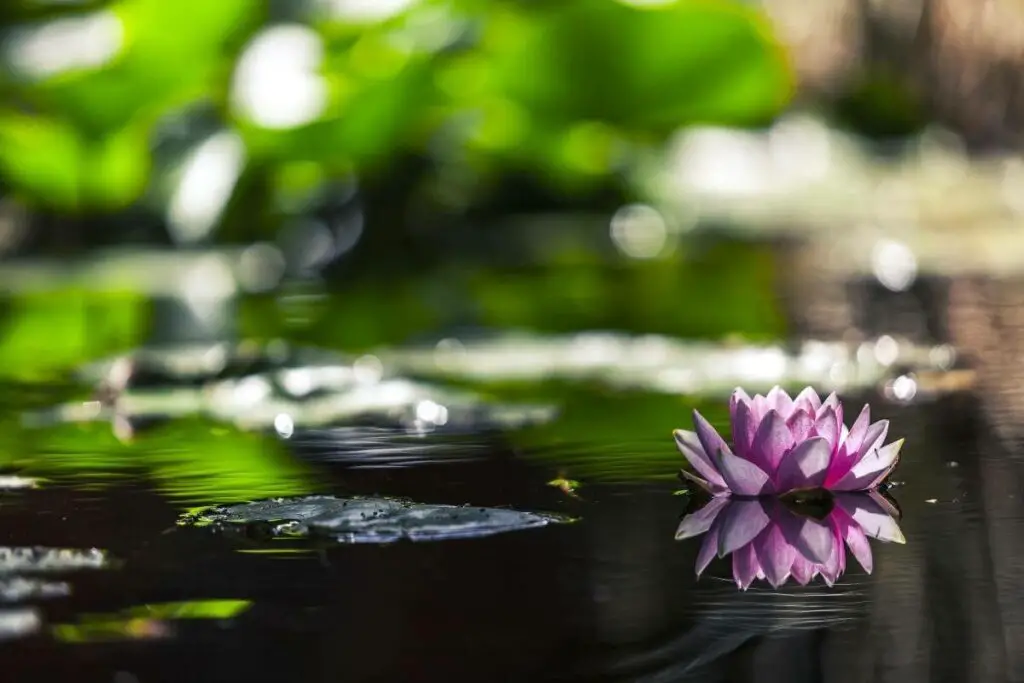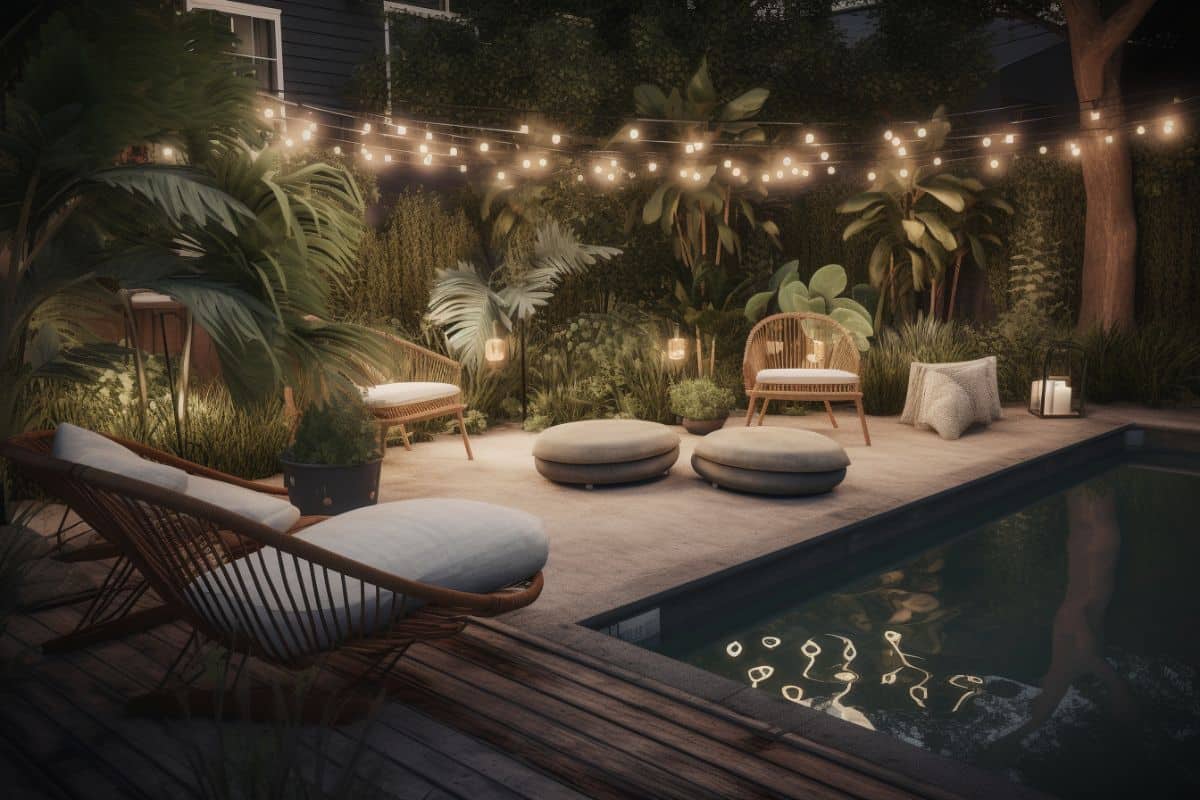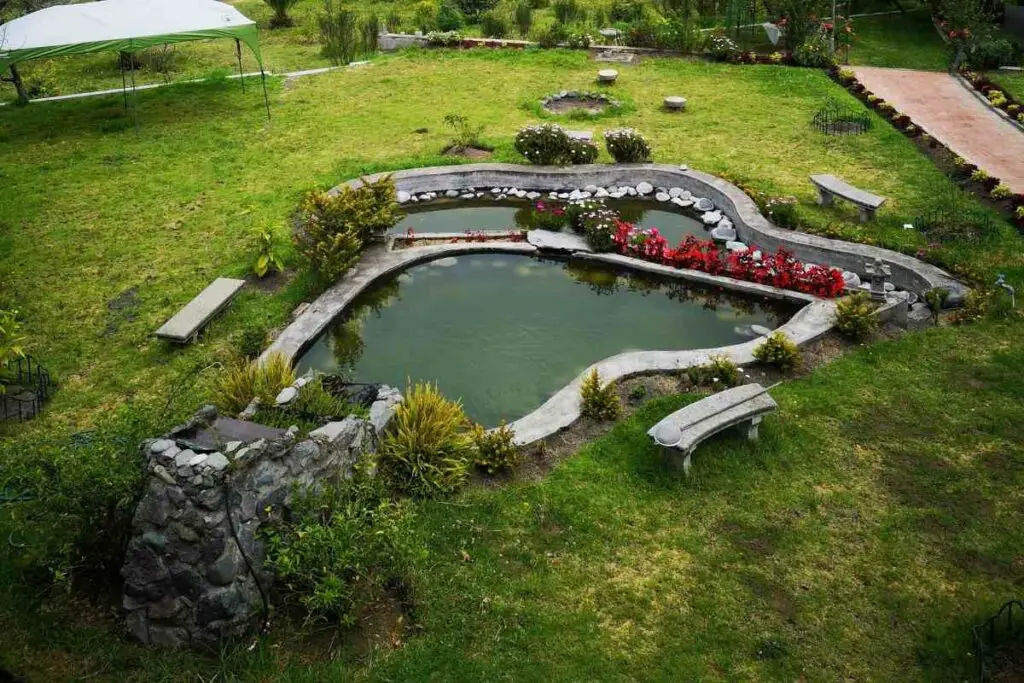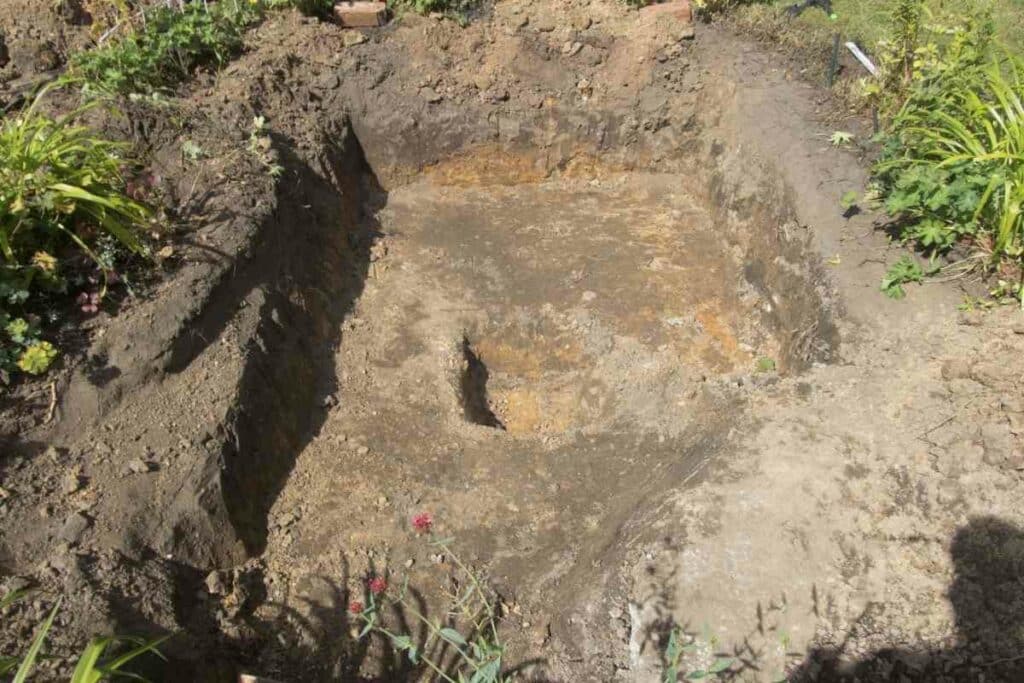Pond plants are unique, water-loving plants. You may wonder, how do pond plants get their nutrients?
After all, some are completely detached from the soil. How do they get nutrients from the water?
Along with this, what plants will survive the best in your pond?
Learn more below!
Submerged Plants that Get Nutrients from the Soil
Submerged plants are plants that are rooted to the bottom of your pond.
Typically, they prefer water that’s 10 feet or less, although some live in water as deep as 20-feet.
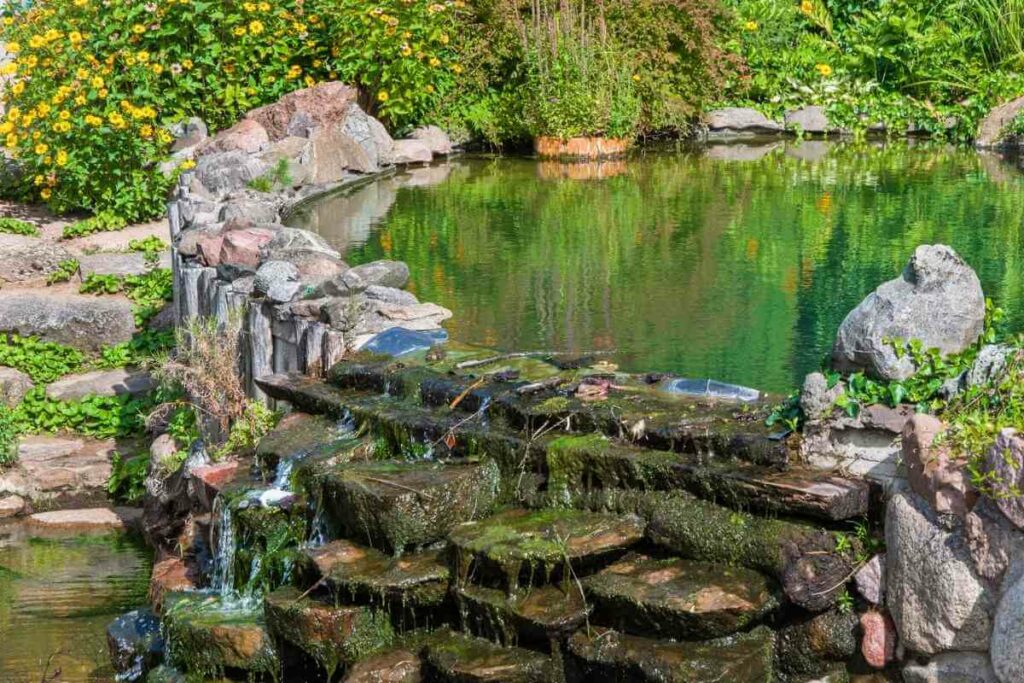
Fish like to use these submerged plants for shelter, particularly juvenile fish and small fish like minnows.
This is because submerged plants provide good shelter from predators. Along with this, submerged plants release oxygen, which is an important part of any pond.
This being said, in your backyard pond, you’ll want to make sure that the submerged plants don’t overgrown.
This can make it difficult for fish and other pond life to get around.
A balance of submerged plants and other plants (and open space) is key.
So, what are some submerged types of pond plants?
What do they require in order to grow?
Let’s take a look!
Anacharis (Elodea)
One of the most popular submerged plants is Anarcharis.
It has light-to-dark, short, grass-like leaves growing from one root cluster.
The best way to plant Anarchis is simply by weighting the plant and dropping it into your pond.
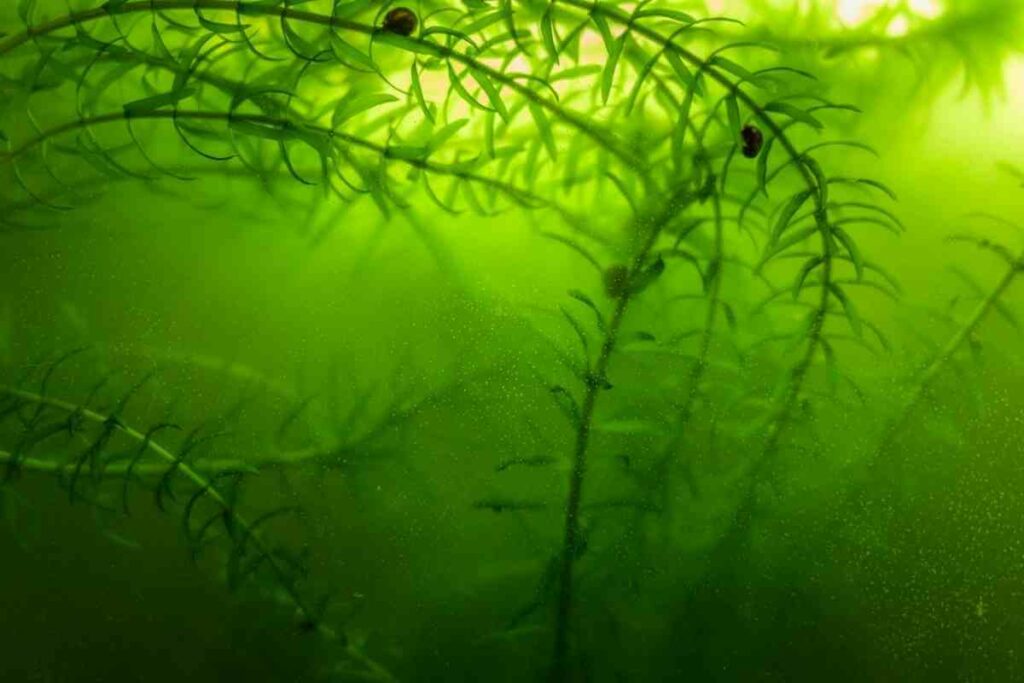
This will ensure that the roots get a chance to attach to the bottom (a necessity for submerged plants like this).
You can also achieve this without a weight, sometimes, by simply burying the roots in the bottom of your pond.
The roots should be 1-2 inches deep, in order to attach properly. Multiple Anarcharis should be spaced at least 1 inch from each other so that they don’t compete for nutrients.
So, what soil does Anarcharis need? Fortunately, this plant is not too picky. It will accept loam, gravel, aquatic soil, and even muck!
Eelgrass
Eelgrass can be planted in one of two ways: by seed, or by transplant.
Currently, there are very few places where you can simply purchase live eelgrass.
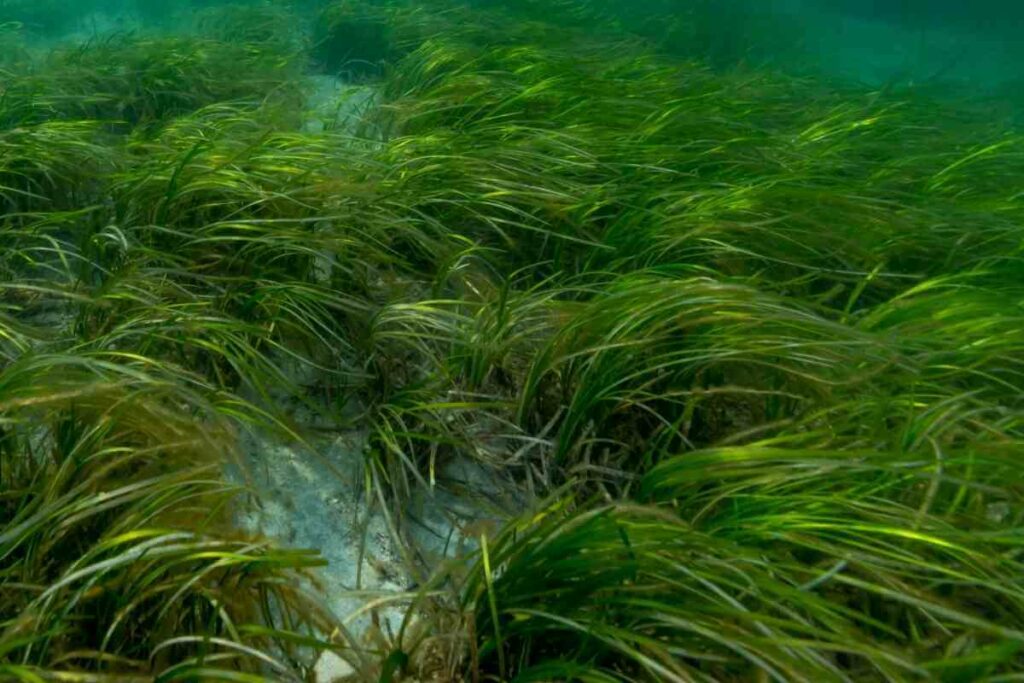
You will need to visit a wild pond (or ask a friend about their pond), in order to procure it.
As its name implies, eelgrass looks like long, seaweed-like grass. Why is this submerged plant commonly found in backyard ponds?
Because it provides shelter for pond critters, particularly fish, as well as helps to oxygenate the pond.
If you happen to have ducks and waterfowl, they will also consider eelgrass to be an appetizing snack!
American Pondweed
American Pondweed is either very good for ponds or bad for them.
What it comes down to is balance. A moderate amount of American Pondweed is a great way to provide habitat and food for your pond life (including frogs, fish, and insects).
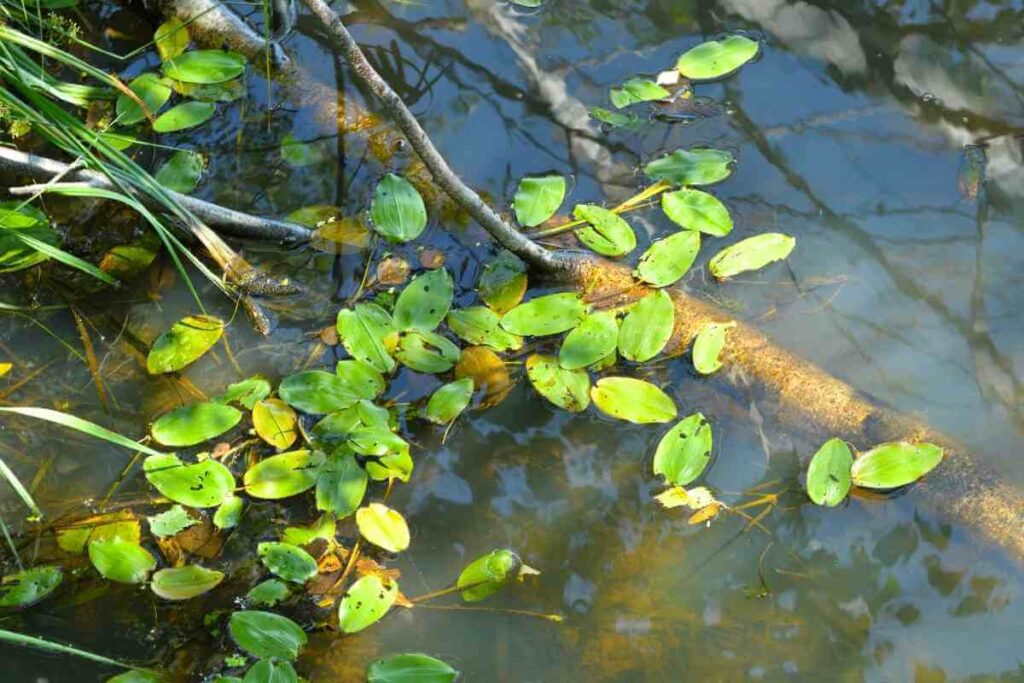
It’s a beautiful, leafy plant, and it can help provide oxygen underwater! Too much pondweed, on the other hand, will clutter the pond.
Then, it may block out sufficient sunlight, etc.
So, while the submerged plant American Pondweed can be quite beneficial, it’s important that you keep its growth in check!
Free-Floating Pond Plants That Get Nutrients From the Water
Free-floating plants are pond plants that get their nutrients directly from the water.
This means that their roots don’t require soil; rather, these plants simply free-float.
They are an excellent source of shelter for pond critters, giving them places to hide.
They also absorb excess detritus and nutrients, keeping the pond cleaner and helping to keep algae in check!
American Featherfoil
American Featherfoil is a flowering water plant. It prefers to grow in shallow, still water.
The plant grows in a series of tall, 5-petaled flowers, and the leaves are submerged or float on the water.
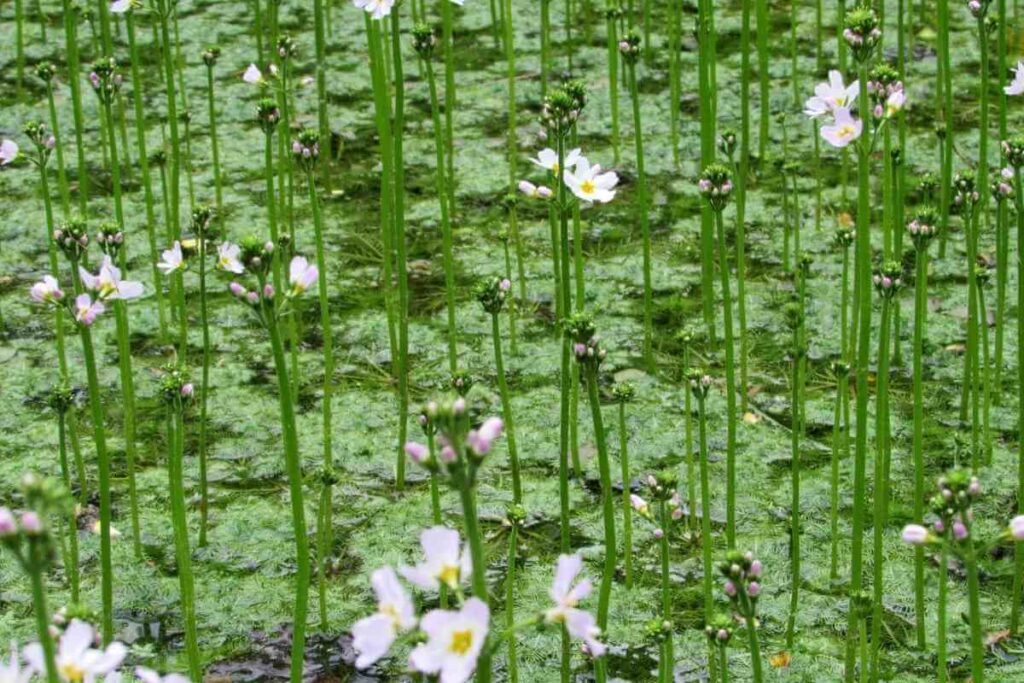
Compared to some free-floating plants, American Featherfoil is somewhat rare. It remains sought-after for its unique look!
So, how can you plant American Featherfoil in your pond?
First off, make sure your pond has a proper, still, shallow area for it. Then, you’ll need to transplant some from a wild pond.
This is a somewhat rare water plant in some areas, so it also depends on where you leave.
The coastal plants of England are one of the best-known growing locations of American Featherfoil.
From Experience: It can be found in swamps, ditches, and ponds. If you are able to find some of these semi-rare plants where you live, you’re in luck!
Duckweed
Duckweed is another free-floating plant, and it creates a pond cover with many tiny leaves.
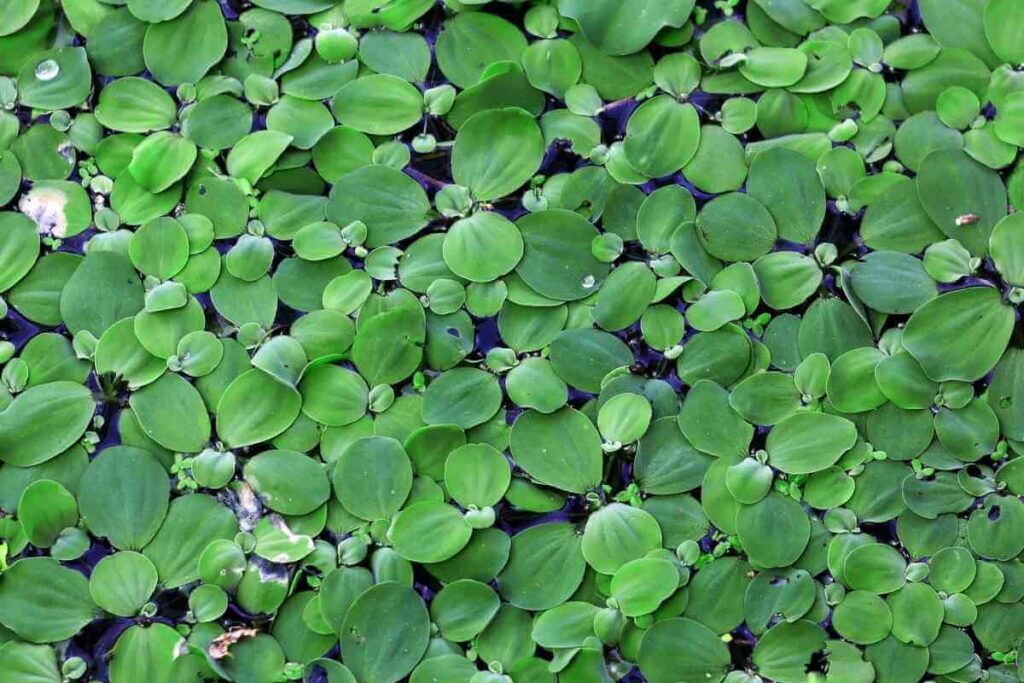
This way, it creates shelter and shade, helping pond life thrive and aiding in keeping algae levels in check!
Floating Crystalwort
Floating Crystalwort is another free-floating plant and one which is easy to introduce to your pond.
It looks like moss, with its small, stringy leaves, and can give your pond a beautiful look. It also provides shelter for pond life, especially tadpoles, fry, and other small critters.
It’s also very easy to plant in your pond.
All that you need to do is break up a living cluster, and the separate, small clusters will spread. This should do the trick!
Emergent Plants that Float but Get Nutrients From Soil
Emergent plants are a mix between floating plants and submerged plants.
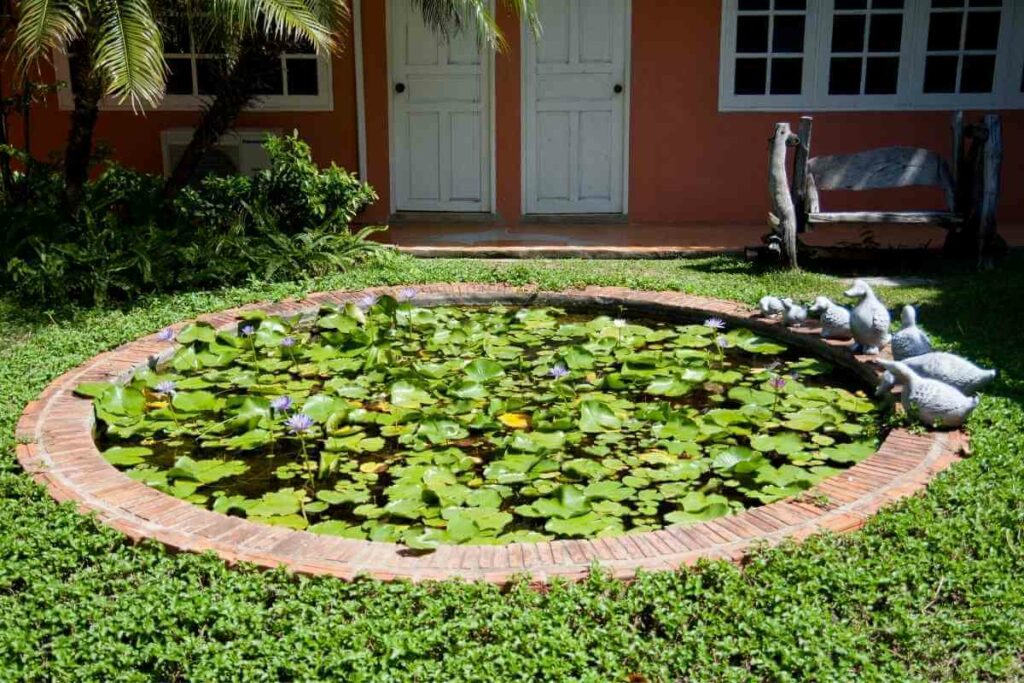
They float, yet they have roots that require soil in order to get the necessary nutrients.
This means that they prefer shallow water, where they can easily reach the bottom of the pond. Water that’s 10 feet deep or less is ideal.
So, what are some popular emergent plants?
Let’s take a look!
Cattails
Cattails are some of the most well-known emergent plants.
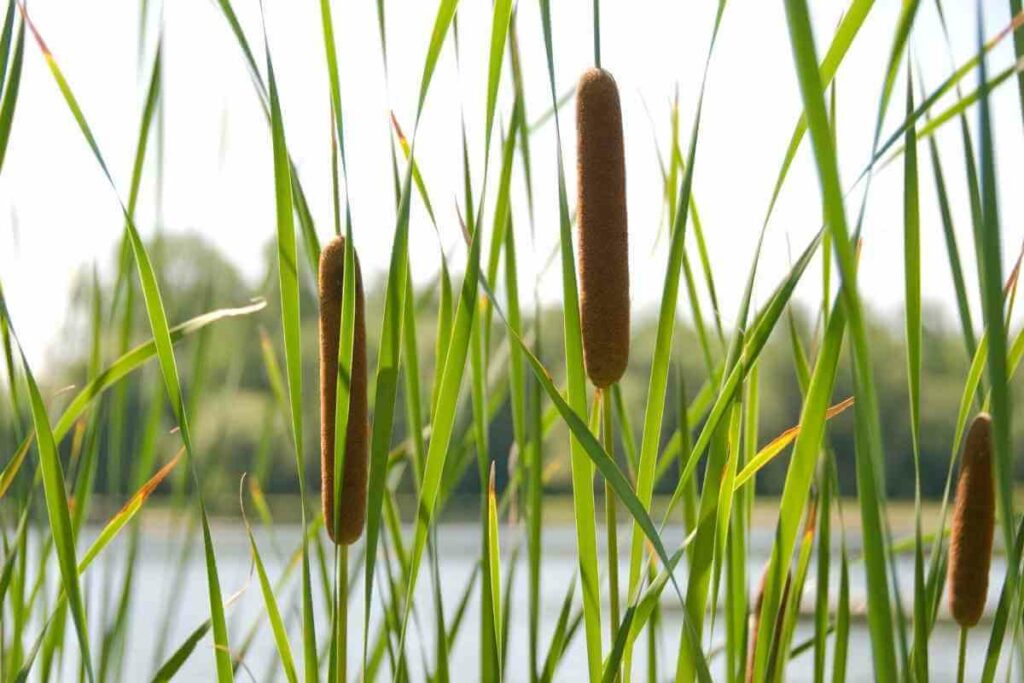
They grow in the shallow edges of ponds, with the roots affixed to the soil. The plant’s heads reach high above the water.
A unique pro of these in ponds is that they help break harsh winds, providing better shelter for pond life.
They’re also quite aesthetically appealing, with their slender stems and distinct, conical tops. They have a very unique look.
Pickerel Weed
Pickerel Weed grows in ponds, rooting in the soil below while the leaves and flowers rise above the water.
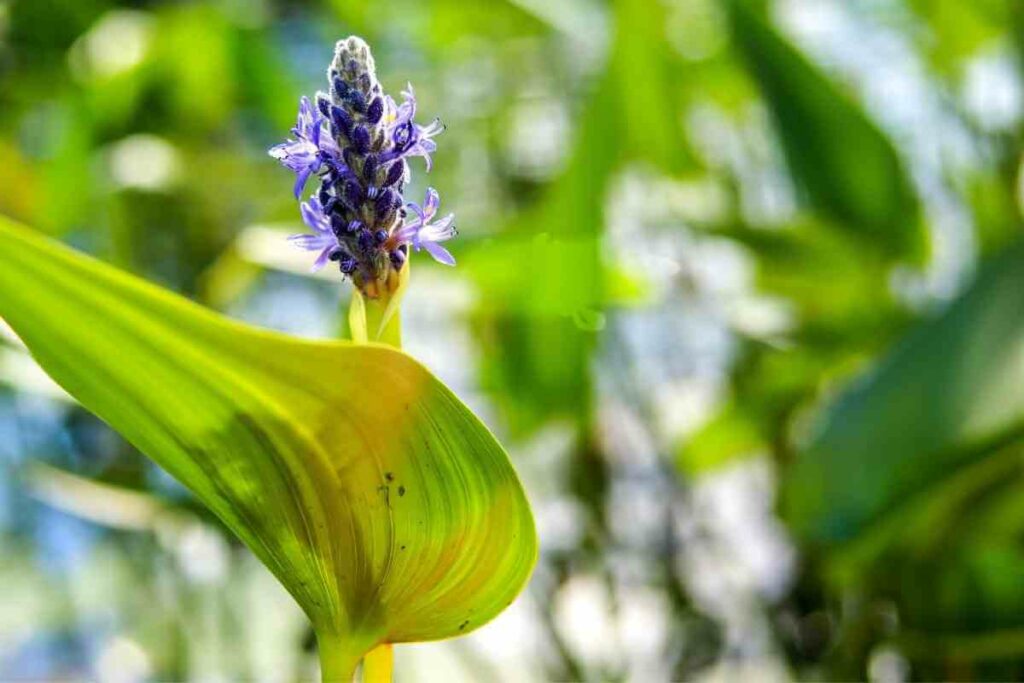
They are renowned for their beautiful purple blossoms and heart-shaped leaves. An interesting fact about Pickerel Weed is that parts of the plant (such as the seeds) are edible.
It also provides shelter for pond life.
Water Lily
Did you know that water lilies are emergent plants?
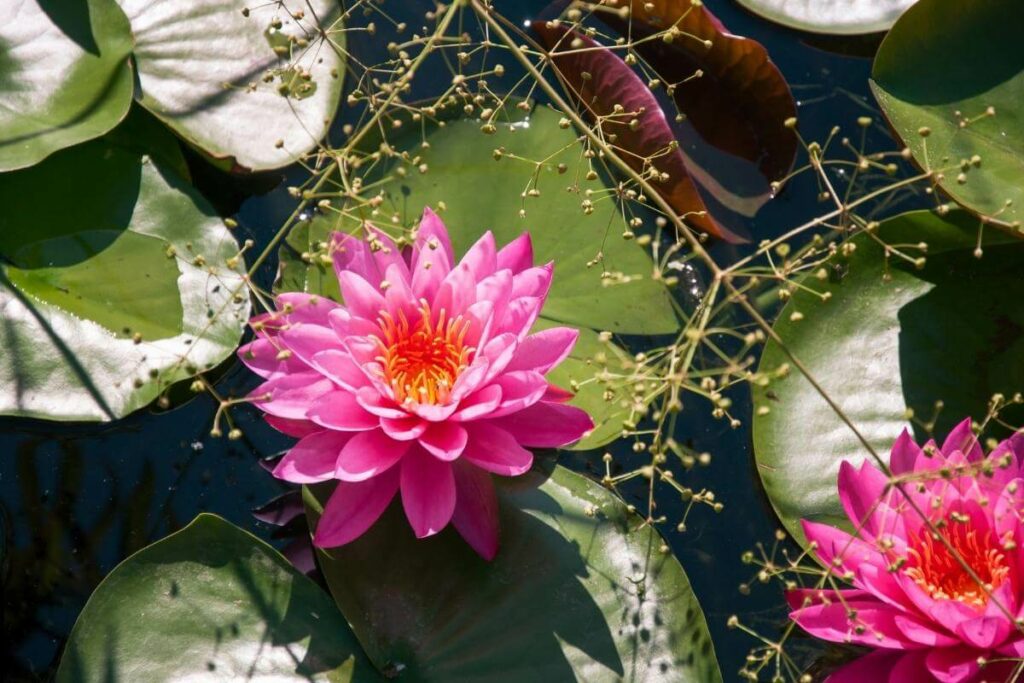
Indeed, they root to the bottom of the pond, with flowers and leaves that float on the surface.
They both provide shelter for pond life, and have a gorgeous look!
Conclusion
So, if you were wondering ‘how do pond plants get nutrients,’ there’s your answer.
Some get it from the soil (submergent), whereas others get it directly from the water (free-floating).
There are also plants that get their nutrients from the soil, yet float atop the water as well, and these are known as emergent. Now you know!
Also Helpful
- What Should I Put in the Bottom of My Wildlife Pond?
- Backyard Oasis With Pool: Creating a Relaxing Retreat in Your Backyard
- How to Find Pond Leak (Quick Method to Find the Leaks)
- Pool Ledge Lounger – Complete Buyers Guide
- Do Garden Ponds Overflow When It Rains
- How To Fill A Pond With Water (Complete Guide)
